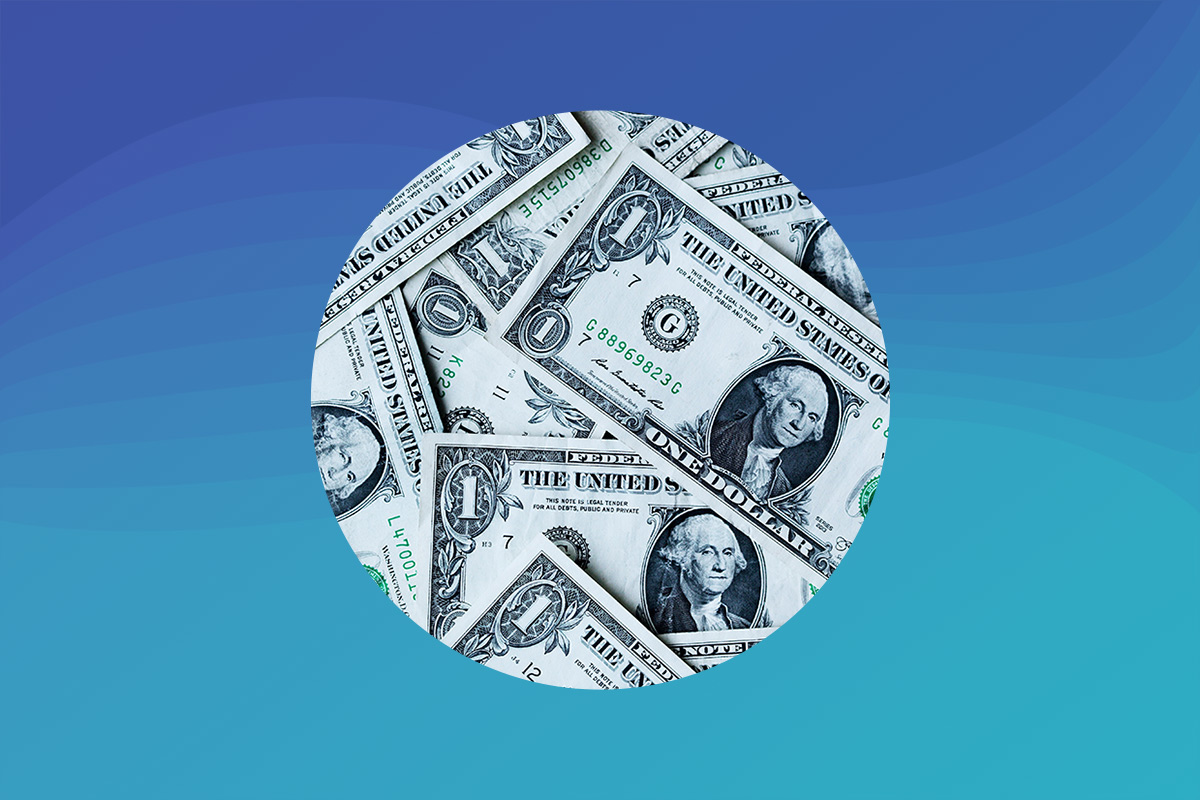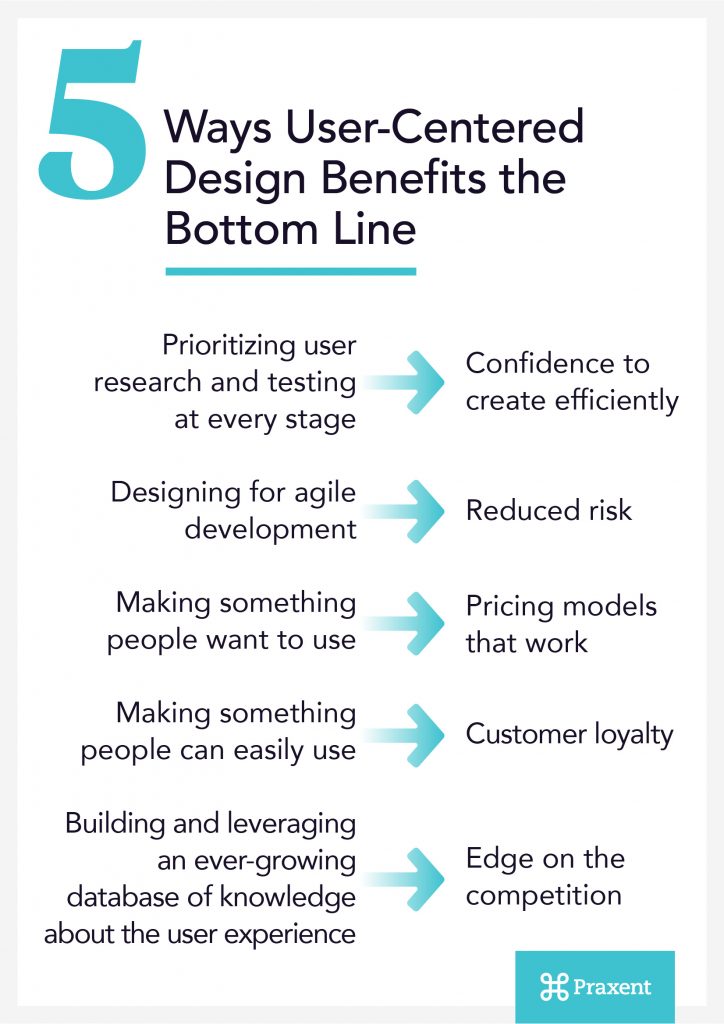
6 min read
5 Ways User-Centered Design Benefits the Bottom Line
5 Ways User-Centered Design Benefits the Bottom Line
User-centered design is a product development framework that makes a product’s success with end users the top priority of both design and development.
User-centered design processes and principles require designers to think long-term. The people who will be using the product and the contexts in which they will use it become front of mind, determining design direction and decisions from the very start of the project all the way through product launch and into ongoing development.
Designers execute user-centered design through ongoing user research, usability testing and iterations.
Through user research and usability testing, designers seek to better understand:
- The goals people wish to meet through their use of a product
- How people behave and the emotions they feel when using a product
- The environment in which a product will be used and any related constraints
- The ideal workflow of a product, and how people will accomplish various tasks in their interactions with that product
User-centered design can be counter-intuitive for businesses. On the surface, it seems to be driven by external forces seeking their own good (product users getting what they want), rather than internal forces seeking the good of the company (businesses getting what they want).
But the truth about user-centered design is that, in satisfying the needs and desires of the people who will use the product, businesses get exactly what they want as well.
And that brings us to the five ways user-centered design benefits the bottom line.

1. Prioritizing user research and testing at every stage >> Confidence to create efficiently
Ongoing user research and testing are two of the primary activities associated with user-centered design.
At the beginning of a project, your understanding of the user experience and exactly how the product should work are vague — it’s based on your assumptions and any user research you’ve been able to conduct.
Once you have a prototype, you can conduct usability tests, analyze the results, refine the design, develop, and test again with people using the actual product. Your understanding of the user experience and how the product should work improves with each iteration.
Design Analysis & Refinement >> Prototyping & Development >> Usability Testing >> Repeat
With each round of testing, analysis, and prototyping, the improved design responds directly to hard facts about what works and what doesn’t. Your design and develop teams don’t waste time creating something that won’t satisfy the people using it — they create efficiently, building in a direction that is certain to succeed.
2. Designing for agile development >> Reduced risk
User-centered design and agile development are a winning combination. As user-centered design facilitates iterative improvement in response to a growing understanding of what works for the end user, agile development likewise facilitates iterative improvement on the performance of a product’s features.
“Agile provides opportunities to recognize and mitigate risk early.”
– Robert Sfeir, Enterprise Agile Coach, “Agile Is About Risk Mitigation“
Teams who adopt user-centered design and agile development processes in tangent avoid having to make expensive and large-scale changes to a product’s design. Sprints and iterations ensure you discover what doesn’t work before wasting time on developing it further.
In other words, you only build what you know will work. It’s a safer investment for all project stakeholders.
3. Making something people want to use >> Pricing models that work
It’s nearly impossible to successfully choose a pricing model for your product without clearly understanding how and why people will value it. If you don’t know what their goals are in using your product, then how can you know what to charge for, or whether to implement subscriptions or position your product for off-the-shelf sales? Even more importantly, how do you know people will pay for your product at all?
User-centered design means everything when it comes to creating a product that makes money. Basically, if you want people to pay you, you have to give them what they want.
Your knowledge about user motivations and how people interact with your product will help you identify the most lucrative ways to communicate and sell value to customers. The alternative is launching a product that fails to deliver value worth paying for because it was not tested and designed for users at every stage of development.
4. Making something people can easily use >> Customer loyalty
User-centered design processes require teams to understand user expectations and behaviors so they can build products that are simple to understand and follow.
The people using your product will never understand the effort and thought that went into designing an interface that makes perfect sense to them. And that’s how you know you did it right.
Intuitive products that are easy to use will always win over products that are meant to accomplish the same thing but are confusing or hard to learn.
>> It shouldn’t take a rocket scientist to navigate your app. Discover UX design services that take the guesswork out of user-centered design.
5. Building and leveraging an ever-growing database of knowledge about the user experience >> Edge on the competition
Most digital products collect data that can help businesses better understand the customer journey or inform user experience improvements. Because this data collection is often an indirect result of the product’s other functions, product designers frequently overlook the opportunity to use it.
Here’s an example. One of our clients, Photomadic, hired us to improve their photo kiosk software. As we dug deeper into the project, we discovered a way to not only solve the problems they were having with their current technology, but also enable marketing analytics using the social-sharing data collected by the product.
This added value propelled Photomadic to a leading industry position. Now, they not only use the software for their own jobs, they also sell the software to other companies.
Conclusion: User-centered design is the smart way to make business decisions that pay off.



Leave a Reply